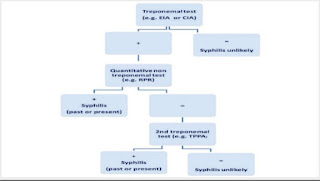"Cervical Funneling in Preterm Labor – What Every Radiologist Should Know"
🚨 The Call That Changed the Day
“Hi, this is Dr. Y from OBGYN. Can you do a quick cervical length scan for a 26-weeker with uterine tightening?”*
It wasn’t unusual to get such calls—but the tone hinted at urgency. The patient, a 32-year-old gravida 2 para 1, had presented with mild lower abdominal pain. Her history? A previous preterm delivery at 28 weeks. Her current pregnancy had been uneventful so far—until today.
The OBGYN team suspected cervical insufficiency. And that meant it was time for a "Transvaginal ultrasound".
🔍 On the Monitor: Something More Than a Short Cervix
The grayscale image appeared, crisp and clear. The endocervical canal was no longer a smooth, long T-shaped tube. Instead, it opened up at the internal os, tapering like a funnel.
This was "cervical funneling"—a subtle but significant sign that the cervix was losing its integrity, and the pregnancy might be at risk.
📚 What Is Cervical Funneling?
Cervical funneling refers to the progressive dilation of the "internal cervical os", with protrusion of the "amniotic membranes" into the cervical canal. It often appears "before" clinical symptoms of labor and serves as a "predictor of preterm birth".
It’s most accurately detected via TVS—and in this case, it made all the difference.
📏 Cervical Length and the “Funnel Shapes”
As I measured the cervical length—now just under 20 mm—I recalled the classic shapes we’re trained to spot:
T-shape – Normal
Y-shape – Initial funneling
V-shape – Moderate funneling
U-shape – Advanced funneling
This patient had a "U-shaped funnel". The writing was on the wall.
🧪 More Than Just Measurements
In addition to the short cervix and U-shaped funnel, there was echogenic “sludge” near the internal os—debris that often reflects inflammation or infection, further increasing the risk.
No contractions were seen on scan, but the cervix was clearly under pressure. The membranes were bulging. The OBGYN team was notified immediately.
🩺 Why This Matters
Cervical funneling, especially with a short cervix, has strong predictive value for "spontaneous preterm labor", particularly before 34 weeks. It may warrant:
Cerclage placement
Progesterone supplementation
Close monitoring or hospitalization
And in this case—it changed the course of management.
📌 Final Thoughts
As radiologists, we often see ourselves as image interpreters. But sometimes, we're the first to see the signs that could save a pregnancy.
Cervical funneling may be subtle. It may be silent. But it speaks volumes—if you know how to look and listen.
Dr. Upasana Y



Comments
Post a Comment